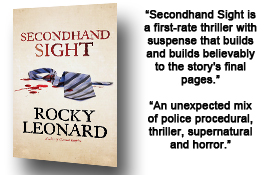Bendigo  Not that long ago the History Channel featured a phenomenal two hour special titled “The Real Face of Jesus”. The program provided new and extensive details about a scientific study of the Shroud of Turin, plus information about alleged corroborating evidence, and an attempt to reconstruct the facial image from the shroud by an expert at producing accurate and lifelike death masks.
Not that long ago the History Channel featured a phenomenal two hour special titled “The Real Face of Jesus”. The program provided new and extensive details about a scientific study of the Shroud of Turin, plus information about alleged corroborating evidence, and an attempt to reconstruct the facial image from the shroud by an expert at producing accurate and lifelike death masks.
Of course, skeptics have argued that experiments have proved that the image on the shroud can be produced by artificial means, but scientific evidence rebuts their claims — these experiments might create an image that superficially resembles the image on the shroud, but not with all of the unique characteristics of it.
Carbon-14 dating allegedly dated the material of the shroud as being between than 1260-1390 A. D., but scientists from the STURP team have subsequently invalidated their own findings. Over the years, the Shroud has been handled, lost, burned, hidden, and taken as plunder in the course of its known history. The chain of ownership is consistent after the date provided via Carbon-14 dating, but a history of an alleged burial shroud for Christ existed from the first century A.D., with a miraculous healing of King Agar V.
Some people question whether or not Jesus actually existed, but as the Catholic priest Father Jonathan Morris has said about Jesus, “We don’t believe in an idea. We believe in a man.”
If Jesus the human existed, as the Bible and history indicates, and if the story of his crucifixion are accurate, the man suffered horrific injuries and inconceivable suffering, followed by a slow and agonizing death. Atheists do not comprehend why God would allow His only begotten Son to suffer such a thing and deeply resent the implication of personal responsibility due to sin, but they are in good company — Christians can’t claim to answer the why question, either.
The concept of sin often conflicts with perceptions of pleasure, and in the minds of some people, there should be no limits on pleasure. Life is short. Enjoyment of life should be maximized. Who can argue with that?
The mistaken assumption is that Christians have no pleasure in their lives. True, some Christians don’t drink, and others refuse any kind of drugs, legal or illegal. But that doesn’t mean those people are not sinners. Those same people may be cheating on their spouses, or their taxes. Nor does that mean that everything one might find pleasurable is a sin.
Besides, as Paul wrote, all have sinned, and fall short of the glory of God. No Christian is perfect. No human is perfect. We aspire to improve ourselves by emulating the perfection of Christ as best we can, and yet we all pale in comparison.
There is no conclusive evidence that the Shroud of Turin was that burial cloth that wrapped the crucified Christ. And there never will be. Without a conclusive chain of evidence, there’s no way to prove that piece of cloth is the same that allegedly cured Agar from a fatal form of leprosy, only thirty years after the crucifixion. And that story may not even be true. There is simply no way to know with any degree of real certainty whether the story is true or untrue.
Christians can easily convince themselves that the shroud is genuine, now that the carbon dating test results have been invalidated by subsequent tests and experiments, But they should never assume that the Shroud of Turin represents any sort of scientific proof that validates their faith. As I’ve said before, even if scientific tests could prove the Shroud of Turin was the burial cloth of a real human being who had been crucified in the exact same manner as described in the Bible, we don’t have the DNA of Jesus, so we could never prove that it had been wrapped around his body. Nor, in my opinion, should a Christian feel compelled to need that validation. Their faith in God should not depend on a bloody piece of cloth. Conversely, non-Christians may find plenty of reasons to reject the shroud, and may assume any stories or miraculous claims associated with it must be false.
However, the problem with making any assumption is that scientific evidence can make us look foolish, when truth comes to light.
If you believe the shroud could be real, the next four parts of this very long article will strengthen that conviction. If you don’t believe the shroud is real, and especially if you think all of the unique characteristics of the shroud were successfully produced by a clever forger, you definitely should also stick around.
Have I got a surprise for you!

Speak Your Mind